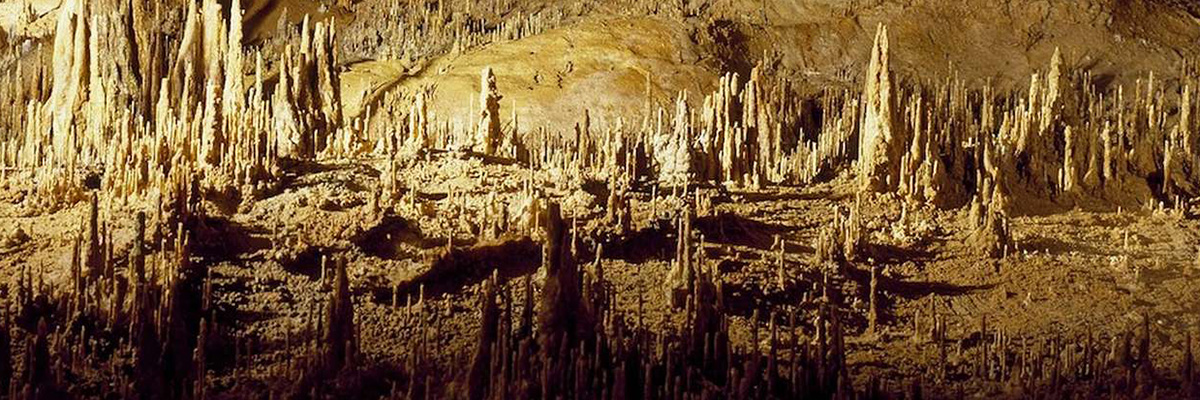Stalagmites are secondary mineral formations that grow from the floors of limestone caves. They are a sub-class of speleothems and are created by the deposition of dissolved minerals, such as calcite, from dripping water. Stalagmites are characterized by their conical shape, with a broad base at the floor and a narrower tip as they grow upward. They can range in size from a few centimeters to several meters in height.
Mineral Makeup
Stalagmites are predominantly composed of calcite, a calcium carbonate mineral. Other minerals, like aragonite, gypsum, or even amorphous silica, can form stalagmites under specific conditions. The mineral composition of a stalagmite depends on the dissolved minerals present in the groundwater and the unique environment of the cave.
Origin
Stalagmites form through the slow precipitation of dissolved minerals from dripping water in limestone caves. When mineral-rich water drips onto the cave floor, dissolved calcium carbonate reacts with carbon dioxide in the air and precipitates as calcite. Over time, these calcite deposits accumulate, creating the conical shape of the stalagmite.
Occurrence
Stalagmites can be found in limestone caves worldwide, with some remarkable examples located in Mammoth Cave National Park (United States), the Jeita Grotto (Lebanon), and the Nerja Caves (Spain). The formation of stalagmites requires specific environmental conditions, such as a constant water supply, dissolved minerals, and stable temperatures.
Metaphysical
Stalagmites are believed to possess metaphysical properties that promote grounding, balance, and perseverance. They are thought to help individuals find stability and inner strength in times of change or adversity. Stalagmites are also associated with the concept of growth and the patience required for personal transformation and spiritual development.
| Class | Sedimentary (Chemical) |
| Mineral Makeup | Primarily calcite, with possible aragonite, gypsum, or amorphous silica |
| Luster | Vitreous to pearly |
| Hardness (Mohs) | 3 (calcite) – varies depending on mineral composition |
| Streak | White (calcite) – varies depending on mineral composition |
| Color | White, cream, or light brown – varies depending on mineral composition and impurities |
| Cleavage | Perfect in three directions, rhombohedral (calcite) – varies depending on mineral composition |
| Specific Gravity | 2.71 (calcite) – varies depending on mineral composition |


